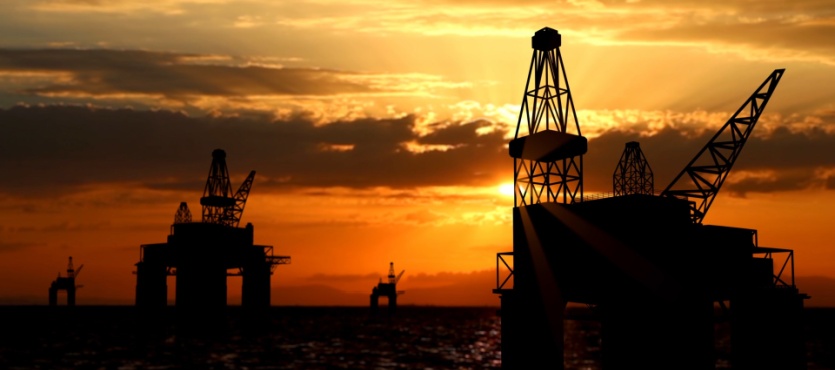Offshore oil workers and other outer continental shelf (OCS) workers have some of the highest injury rates of any workers in America. The work is dangerous, mostly because of the risk of petrochemical and other explosions. Furthermore, most offshore energy exploration and other such facilities offer limited onsite medical services and no onsite emergency medical transportation services. The treatment delay means that serious injuries become fatal or catastrophic (life-threatening) injuries.
The 1953 Outer Continental Shelf Lands Act created a mechanism to compensate these injury victims for their lost wages and pay their medical bills. Under the law, most victims receive two-thirds of their lost wages for the duration of a temporary or permanent disability, and the OCSLA insurance company must pay all reasonably necessary medical bills. Only an OCS lawyer goes toe-to-toe against stingy insurance companies and secures these life-changing benefits for job injury victims and their families.
What Does the Outer Continental Shelf Act Accomplish?
Primarily, the OCSA fills in a jurisdictional gap between state workers’ compensation and the federal Jones Act.
In the late 1800s, energy companies discovered that beach and tidal-area oil deposits were the richest and largest oil deposits. However, state workers’ compensation benefits usually end at the shoreline, and similar Jones Act benefits are usually only available to seafaring job injury victims, like merchant marine sailors, deep sea commercial fishers, and cruise ship employees.
The OCSA also fits a need. By 1910, America had quickly turned to oil as its primary natural resource. Technology advanced quickly, and for a decade, new valves, controls, and drilling control instrumentation were developed. In the mid-1940s, to meet an enormous public demand for oil and gas, offshore exploration included underwater exploration, drilling location determination, and offshore communications.
What Injuries Does the OCSA Cover?
OCSA benefits apply to trauma injuries and occupational diseases as long as those injuries or illnesses are work-related. More on that below.
Trauma injuries on offshore energy production facilities usually include falls, struck-by injuries, and serious burns.
A fall from as little as four stories above ground is typically fatal. Falls from shorter heights often cause serious or life-threatening injuries, especially if the victim has a pre-existing condition, like a previous fall. OCSA lawyers often obtain significant compensation for fall injury victims because these injuries are so easy to prevent, yet energy production and other companies don’t take proper protective measures.
Dropped tools are the most common struck-by injuries on offshore energy production platforms. The old story about a penny dropped from the top of the Empire State Building being fatal to a pedestrian on the ground is partially true. Small objects accelerate quickly as they descend.
OCS burns are usually temperature or chemical burns. Temperature burns sear the flesh and are difficult and expensive to treat. Chemical fume burns usually affect the ear, nose, and throat. Frequently, victims do not know the full impact of these burns until their conditions are severe.
Chemical exposure, or toxic exposure, is a common occupational disease among OCS workers. Other long-term illnesses include hearing loss and repetitive stress injuries. Many OCS production platforms are noisy enough to cause hearing loss but not loud enough to trigger mandatory safety requirements. RSIs often affect the knees, ankles, hips, and other joints of workers who bend, stoop, or kneel frequently.
When Was the Outer Continental Shelf Lands Act Passed?
The original OCSLA, which was passed in 1953, has expanded significantly over the years. It now covers more workers and offers more benefits.
As the industry continued to evolve through the 1950s, oil production became the second-largest revenue generator for the country. The U.S. government passed the U.S. Submerged Lands Act in 1953, which set the federal government’s title and ownership of submerged lands at three miles from a state’s coastline.
After the Santa Barbara Oil Spill in 1969, Congress passed several acts that spurred the development of oil spill regulation and research. They included the National Environmental Policy Act, which mandates a detailed environmental review before any major or controversial federal action, the Clean Air Act, which regulates the emission of air pollutants from industrial activities, and the Coastal Zone Management Act, which requires state review of federal action that would affect land and water use of the coastal zone. In 1977, the Clean Water Act was passed. The Act regulates the discharge of pollutants into surface waters.
In 1982, Congress passed the Federal Oil & Gas Royalty Management Act, which mandates the protection of the environment and conservation of federal lands in the course of building oil and gas facilities. On May 19, 2010, Congress created the Bureau of Ocean Energy Management, Regulation and Enforcement (BOEMRE).
In 2022, Congress further amended the OCSLA, requiring BOEM to hold at least one oil and gas lease sale and offer a total of at least 60 million acres for oil and gas leasing in the year prior to executing offshore wind leases.
What is the Burden of Proof for Employees?
Injured victims must prove, by a preponderance of the evidence (more likely than not), that their illness or injury was substantially work-related.
Technically, full benefits are available regardless of fault. However, administrative law judges often award more compensation if the illness or injury was mostly the employer’s fault.
The same burden of proof applies if a victim sues outside the OCS compensation system following an intentional or reckless injury. Victims also have this option if their employers didn’t have valid insurance policies.
For more information about OCS compensation, contact Barnett, Lerner, Karsen, Frankel & Castro, P.A.

